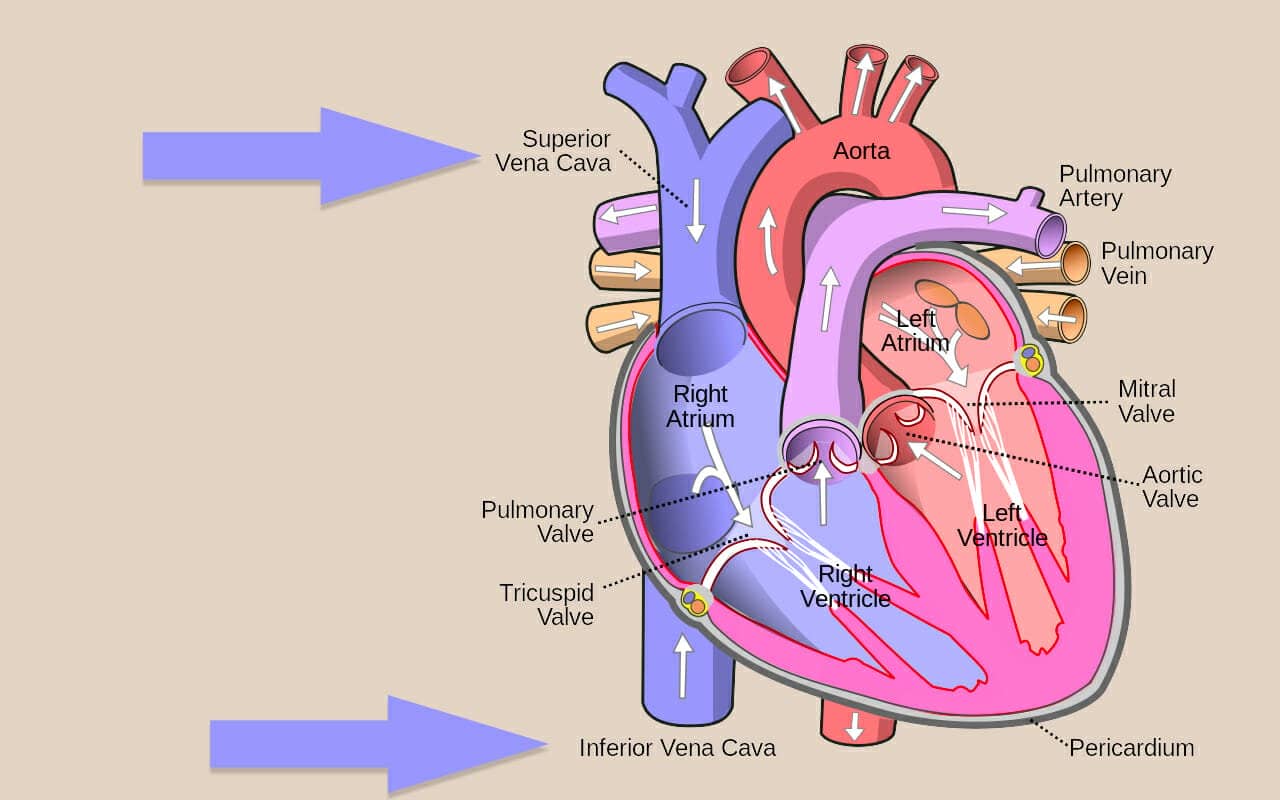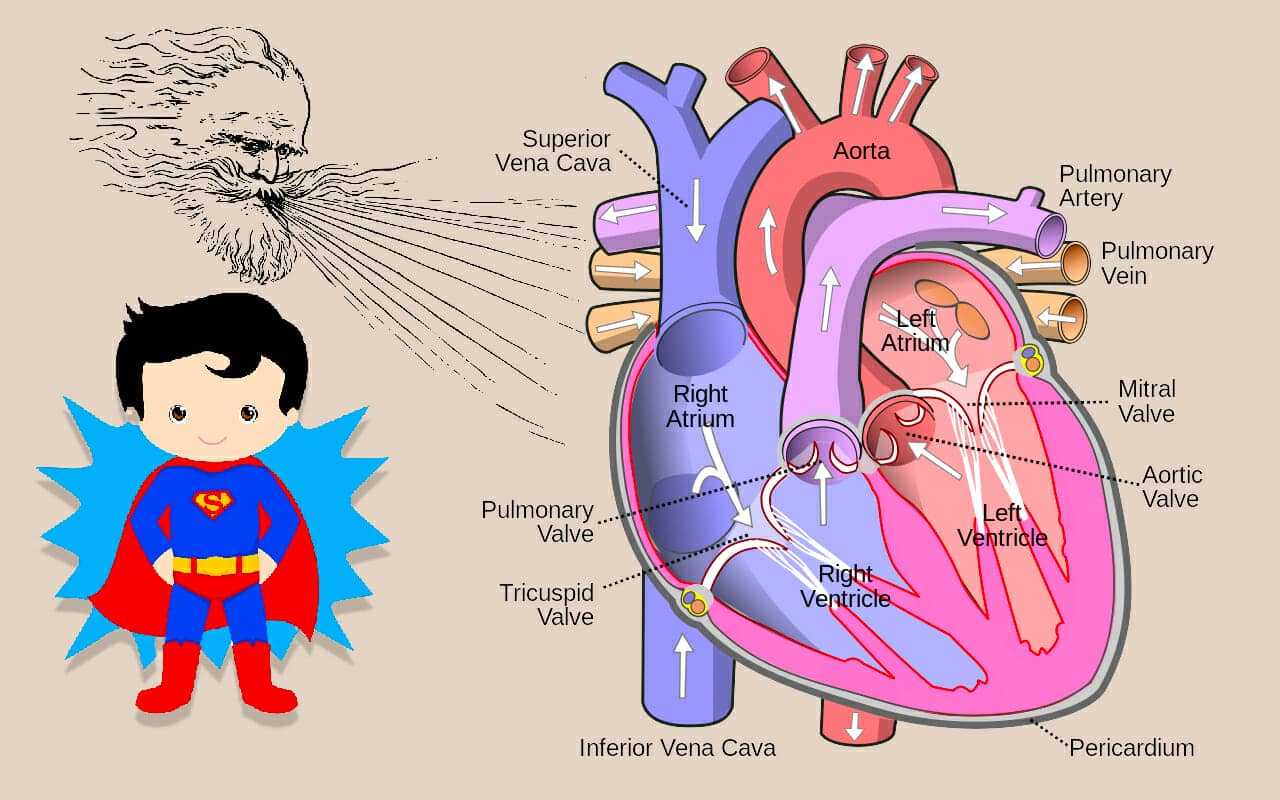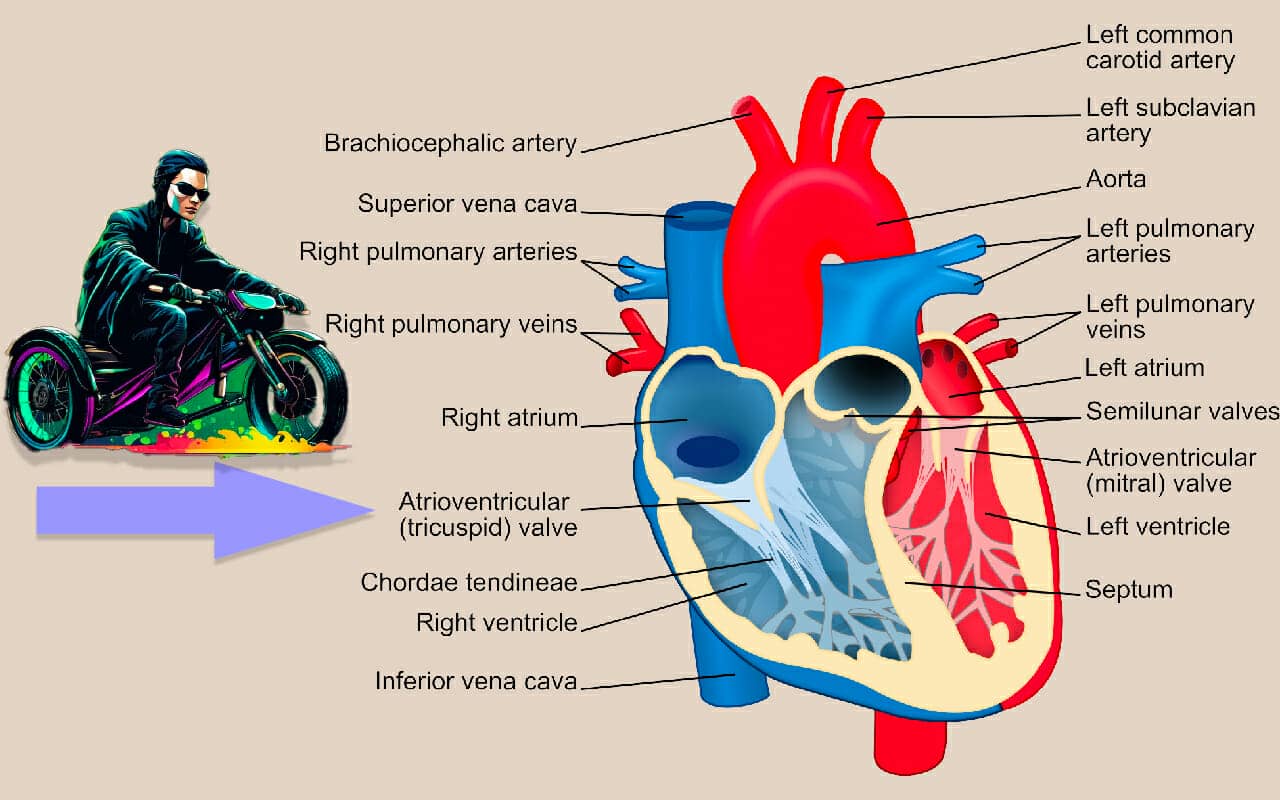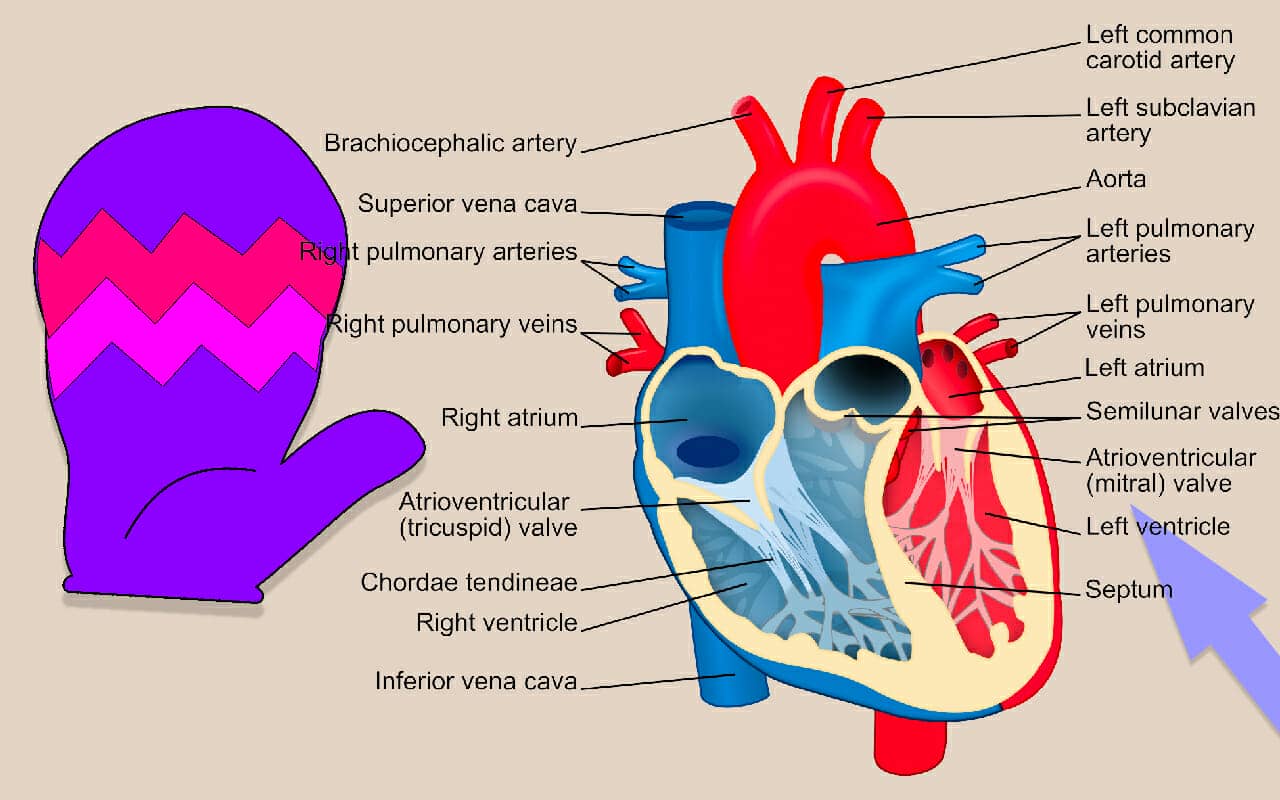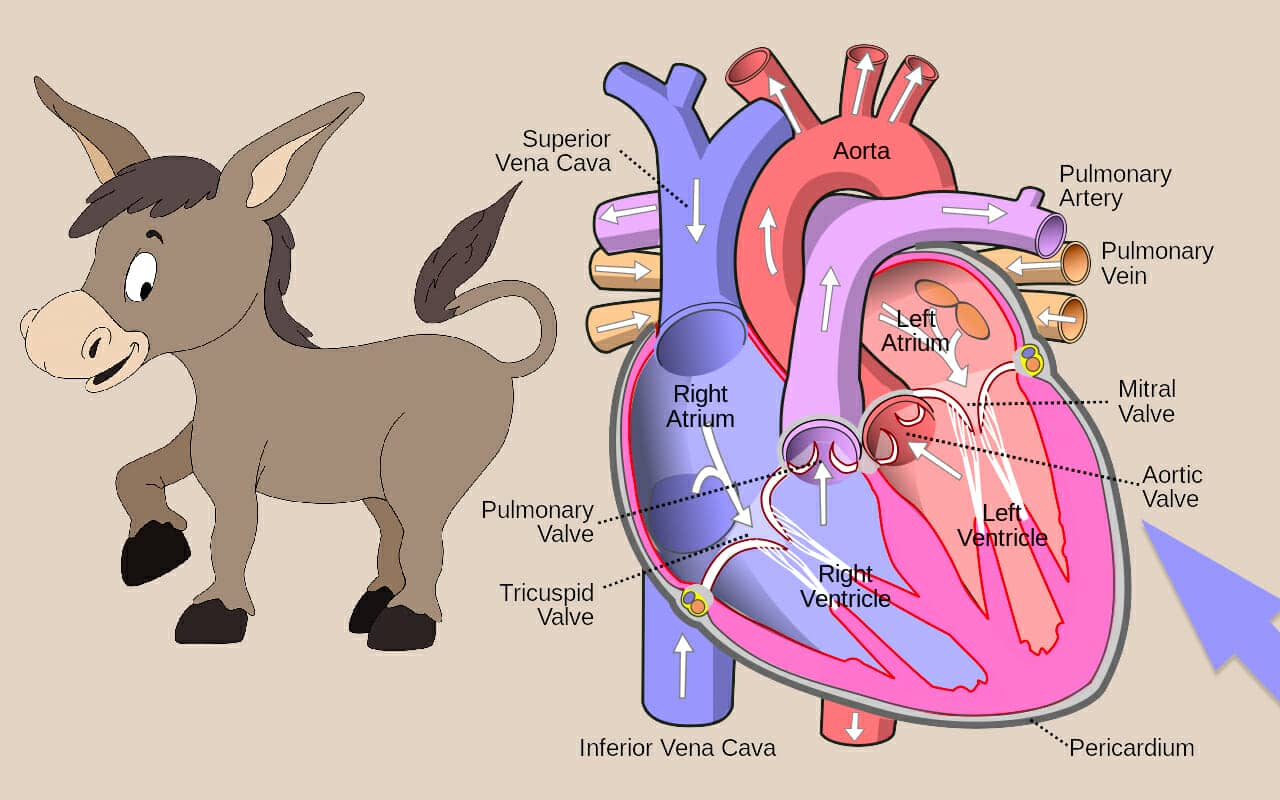 Need an easy way to remember blood flow through the heart?
Need an easy way to remember blood flow through the heart?
I did too, and on this page, I’ll share the best blood flow mnemonic I found for getting the learning done quickly.
I’ll also share with you how to rapidly memorize the valves of the heart.
Knowing their names and locations, so to speak, is the heart of the matter, after all.
The best part?
I’ll help you understand medical mnemonics in a completely new way.
That way, you’ll be able to create your own, saving time throughout your medical career, from learning to the top professional you want to be.
Ready to end the struggle with learning the heart valves and how they work to regulate blood flow?
Let’s get started!
What Is the Path of Blood Flow Through the Heart?
The human heart is surprisingly intricate. But it’s also part of a larger network of many interesting complexities called the circulatory system.
When the heart is healthy, blood flows through heart valves that properly prevent backflow. The proper functioning of these valves is important because the heart pumps blood according to rhythms governed by “pacemaker cells.”
In the human heart, here’s how the blood flows:
Deoxygenated blood enters the heart through the right atrium. (We’ll talk about a specific mnemonic to help you remember this fact below.) This deoxygenated blood specifically enters the right atrium from the superior and inferior venae cavae.
Once the blood has passed through these cavae it enters the right ventricle.
It enters pulmonary circulation to the lungs to receive oxygen and expel carbon dioxide. Oxygenated blood them moves into the left atrium, passes through the left ventricle is pumped through the aorta. From there, it travels through arteries, capillaries and arterioles to exchange nutrients and other substances before returning to the heart of another round of oxygenation.
Blood Flow Mnemonic for Easy Memorization
To remember that deoxygenated blood enters specifically through the right atrium, think about ROX.
I imagine an old and weary Rock n’ Roll band like Roxy Music needing a pick me up. Since ‘R’ is the first initial for “right,” and “ox” is in the word oxygen, this provides a powerful mnemonic image.
The cool thing is that you can imagine this happening using a Body Memory Palace on the right side of your own heart, and even say out loud: “My heart ROX!”
You can imagine any tired old rock band that you want, and even add them having to carry bags of heavy rocks to compound the image and the “R” that indicates “right.”
Next, you can think of LOX for the left side. You just imagine that same band having visited the lungs (which starts with L) before moving into the left artrium and left ventricle.
If it helps, you can imagine everyone now looking young and refreshed like Goldilocks from the kids’ story.
Mnemonics For The Superior Vena Cava and Inferior Vena Cava
As you’ve just discovered, it’s easy and fun to play with the alphabet in order to develop strong mnemonics.
It’s the same thing with medical terminology like superior vena cava and inferior vena cava. Check out this image:
“Superior” sounds like Superman. There’s a scene in one of the movies where Superman blows on a lake to turn it into ice. This can be used to remember that blood enters the superior vena cava.
Since Superman’s enemies are inferior, you can use the concept of opposites to help remember the inferior vena cava.
It’s easy and fun to continue in this way for the specifics of blood flow through the heart. Let’s look now at some specific mnemonics for the valves of the heart. Basing your own cardiovascular system mnemonics on suggestions like these will help boost your success.
Bonus: How to Remember Heart Valves
As mentioned, the valves of the heart prevent blackflow.
These valves are divided into categories and called:
- Atrioventricular valves
- Tricuspid valve
- Bicuspid (or mitral) valve
- Semilunar valves
- Pulmonary semilunar valve
- Aortic semilunar valve
When it comes to how to remember the heart valves, you already have a strong clue. You look at the spelling of the term and then associate it with a striking image. Generally, we call this approach the pegword method.
It can take a bit of practice to get rapidly come up with these images, but it’s well worth it. Here are some of my mnemonic examples. You can use them directly if they resonate with you, but the higher goal is for you to learn how to craft them for yourself.
Mnemonic Example for The Tricuspid Valve
To memorize this information, you need to remember the name of the valve and the category to which it belongs.
The valves in the atrioventricular heart valve category get this name due to their location between the atria and the ventricles. Additionally, when their leaflets open, they protrude into the ventricles.
To memorize the term “tricuspid,” you can imagine Trinity from The Matrix on a tricycle.
To make the mnemonic sound even closer to the word “tricuspid,” you could imagine Trinity cussing at a cupid.
Make sure to imagine this taking place in this specific area of the heart. Use the link and story method to link it further to the Atrioventricular category.
For example, you can use the ROX mnemonic for blood flow to add Trinity interacting with the old rock stars in a concert hall atrium you imagine in this part of the heart.
Mnemonic Example for The Mitral Valve
The Mitral Valve is also part of the Atrioventricular category. The first trick is to observe that it is more or less at the same level of the heart on a horizontal line. But it’s on the left side.
This means you could use the Goldilocks method to remember that blood reaching the Mitral valve will be oxygenated.
Mitt Romney is a politician with a very similar sounding name. There’s also Mitte, part of Berlin. Or mittens.
For even better results, it’s helpful to combine images. Having Mitt Romney wearing mittens while shovelling snow in this region of the heart will help make the information stickier.
Mnemonic Example for The Pulmonary Semilunar Valve
By now you know the drill. You just search your mind for a celebrity or other interesting figure to link to the word pulmonary. Then you place that association in the heart itself.
For this mnemonic example, I thought of the legendary actor Bill Pullman giving a sermon at the pulpit.
This mnemonic goes more or less directly into the center of the heart and it’s easy to remember that the blood flows out through pulmonary arteries. To remember that it belongs to the semilunar valves, Bill Pullman can be pulling down the moon at the same time, but only half of it.
You could also involve a semi-truck in the image to help with the sound of semilunar.
Mnemonic Example for The Aortic Semilunar Valve
Sometimes there are tricky sounds to come up with medical mnemonics for, like the aortic semilunar valve.
But perhaps you remember Eeyore from Winnie-the-Pooh? It’s not exactly the same sound, but close enough.
He’s basically a donkey, and probably his name is based on how donkey’s sound.
Again, it’s just a matter of placing that image on this area of the heart and think about it in combination with what you’ve learned about blood flow.
The Heart Is Easy To Remember
By all means, there’s a lot of information to cover related to the heart.
But now that you’ve discovered how ancient memory techniques operate, you can apply the basic strategies to the wealth of pop culture information you have at your fingertips.
You can add quick and fun drawings like these to your flashcards. That way you can employ proper active recall while practicing spaced repetition learning.
If you’d like more help, please grab my FREE Memory Improvement Course here:
It will help you master all aspects of medical terminology. I’m talking about everything from the order of the draw to pharmacology, lab values and all things related to nursing. You can even listen in to how one of my best nursing students mastered phlebotomy quickly using these techniques for more mnemonic examples.
So what do you say?
Are you ready to make learning everything about the faster, easier and more enjoyable?
Make it happen!
Related Posts
- How to Remember Insulins: 4 Fun And Easy Mnemonic Examples
Learning how to remember insulins of each type, including onset, peak times and duration is…
- Mnemonic Devices: 8 Detailed Case-Studies For Learning Faster
What are mnemonic devices, and how can you use them to improve memory? This post…
- Mnemonic Examples Of Memorizing Software Principles
Mnemonic examples of how one cool guy memorized software principles.

